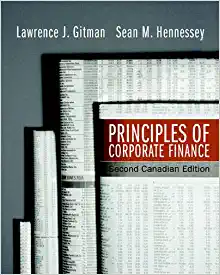Question
MINI-CASE 1: ESTIMATING INTEREST RATE USING PREMIUMS (References: See essentially Custom Text chapters 1 and 7) Preliminary Remarks : The purpose of this mini-case is
MINI-CASE 1: ESTIMATING INTEREST RATE USING PREMIUMS
(References: See essentially Custom Text chapters 1 and 7)
Preliminary Remarks:
The purpose of this mini-case is to demonstrate how the required rate of return on a fixed-income security can be determined, using the risk premium perspective. The mini-case brings together in a simple model several of the various risks associated with fixed-income securities. From a corporation perspective, the nominal interest rate to be determined in this mini-case can serve as a basis for the firms before-tax cost of debt. At the issue of the security, if the nominal interest rate is set as the coupon rate that is equal to the yield to maturity (so that the price equals the par value), then the rate can also be interpreted as the discount rate. From the perspective of investors (buyers of the security), the rate could be interpreted as the investors nominal required rate of return.
The Mini-Case Assignment:
Your company, Binghamton Truck, Inc., is about to offer a new issue of corporate bonds to the investing marketplace. You have been asked by your CFO to provide a reasonable estimate of the nominal interest rate (nominal yield), rd, for a new issue of Aaa-rated bonds to be offered by Binghamton Truck.Some agreed-upon procedures related to generating estimates for key variables in the relevant equation, rd = r*rf + IRP + DRP + MP + LP, are as follows:The current (mid-2008) financial market environment is considered representative of the prospective tone of the market near the time of offering the new bonds to the investing public. This means that current interest rates will be used as benchmarks for some of the variable estimates. All estimates will be rounded off to hundredths of a percent; thus, 6.288 becomes 6.29 percent.The real risk-free rate of interest, r*rf, is the difference between the calculated average yield on 3-month Treasury bills and the inflation rate.
The inflation-risk premium, IRP, is the rate of inflation expected to occur over the life of the bond under consideration.
The default-risk premium, DRP, is estimated by the difference between the average yield on Aaa-rated bonds and 30-year Treasury bonds.
The maturity premium, MP, is estimated by the difference between the calculated average yield on 30-year Treasury bonds and 3-month Treasury bills.
Binghamton Truck bonds will be traded on the New York Exchange for Bonds, so the liquidity premium, LP, will be slight. It will be greater than zero; however, because the secondary market for the firms bonds is more uncertain than that of some other truck producers, it is estimated at 3 basis points.
Note: A basis point is one one-hundredth of 1 percent. (E.g., 1 basis point = 0.01%; 25 basis points = 0.25%)
- Based on your research, the mid-2008 estimates of the representative interest and inflation rates are as follows: (1) 3-Month T-Bills = 4.89%, (2) 20-Year T-Bonds = 5.38%, (3) Aaa-Rated Corporate Bonds = 6.24%, and (4) Inflation Rate = 3.60%.
Required Task: Complete the Solution Table below, which is presented in form of a formula required to determine Rd. Place your answers (values) in the cells below the variables, and show your calculations below the Table, where applicable, of how you obtained the value for each of the variables.
Solution to Mini-Case 1 (show your work below the table, as appropriate):
|
r*rf
|
+ IRP |
+ DRP |
+ MRP |
+ LRP |
= |
rd |
|
|
|
|
|
|
|
|
Step by Step Solution
There are 3 Steps involved in it
Step: 1

Get Instant Access to Expert-Tailored Solutions
See step-by-step solutions with expert insights and AI powered tools for academic success
Step: 2

Step: 3

Ace Your Homework with AI
Get the answers you need in no time with our AI-driven, step-by-step assistance
Get Started


